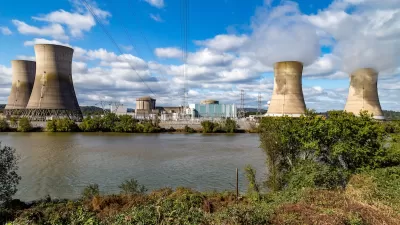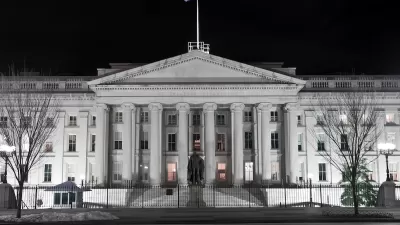Never mind that the lines are needed to carry renewable energy from wind turbines in the north to industries in the south to meet the nation's formidable carbon reduction policies. Public health and property values come first for some neighbors.
Germany set an impressive clean power goal "to reach more than 40 percent renewable power by 2025," writes The New York Times Berlin-based correspondent Melissa Eddy. It's related to another goal—meeting "the accelerated shutdown of Germany’s nuclear plants in the wake of the Fukushima Daiichi disaster in Japan in 2011 which has inched the country back toward a greater reliance on coal," she writes. "Germany already draws nearly a quarter of its annual power from renewable sources."
Instrumental to meeting both goals and reducing reliance on dirty coal power is the construction of "four high-voltage direct current lines" to transmit wind power. Building those lines may be the biggest obstacle to attaining the nation's green goals.
(C)itizens living in the areas proposed for the half-mile-wide transmission lines say they worry that the magnetic fields from the lines could harm their health. (So far, most scientific studies have not found a significant threat. In 2006, the World Health Organization said [PDF] static electric and magnetic fields had no adverse health impact, but public fears persist.)
But it's not just a matter of public health concerns though. As most any affordable home builder in the United States knows all too well, affected homeowners fear a loss in property values.
For the general public, the fear is a little bit irrational,” said Philipp Gerbert, who works for the Boston Consulting Group, which provides information on energy for its clients. “But for those particular individuals actually affected, the presence of a transmission line means the value of their property goes down.”
"The government, in legislation speeding up the lines’ construction, said the public would have a part in the planning process," writes Eddy. Some of main questions the public is asking include:
- Are the lines necessary?
- Can they be undergrounded? [Yes, but too costly for entire lane]
- Can the routing be changed—to other peoples' backyards [hence the NIMBY term], but also to undeveloped, protected lands?
FULL STORY: Germans Balk at Plan for Wind Power Lines

Trump Administration Could Effectively End Housing Voucher Program
Federal officials are eyeing major cuts to the Section 8 program that helps millions of low-income households pay rent.

Planetizen Federal Action Tracker
A weekly monitor of how Trump’s orders and actions are impacting planners and planning in America.

Ken Jennings Launches Transit Web Series
The Jeopardy champ wants you to ride public transit.

Rebuilding Smarter: How LA County Is Guiding Fire-Ravaged Communities Toward Resilience
Los Angeles County is leading a coordinated effort to help fire-impacted communities rebuild with resilience by providing recovery resources, promoting fire-wise design, and aligning reconstruction with broader sustainability and climate goals.

When Borders Blur: Regional Collaboration in Action
As regional challenges outgrow city boundaries, “When Borders Blur” explores how cross-jurisdictional collaboration can drive smarter, more resilient urban planning, sharing real-world lessons from thriving partnerships across North America.

Philadelphia Is Expanding its Network of Roundabouts
Roundabouts are widely shown to decrease traffic speed, reduce congestion, and improve efficiency.
Urban Design for Planners 1: Software Tools
This six-course series explores essential urban design concepts using open source software and equips planners with the tools they need to participate fully in the urban design process.
Planning for Universal Design
Learn the tools for implementing Universal Design in planning regulations.
Ada County Highway District
Clanton & Associates, Inc.
Jessamine County Fiscal Court
Institute for Housing and Urban Development Studies (IHS)
City of Grandview
Harvard GSD Executive Education
Toledo-Lucas County Plan Commissions
Salt Lake City
NYU Wagner Graduate School of Public Service





























